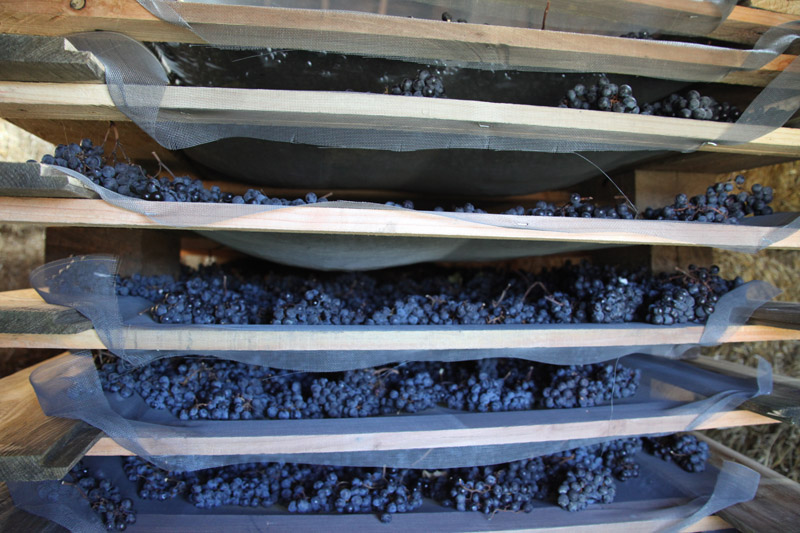Kurt Guba is someone I’ve worked with since I moved to the Niagara region in 2007. He’s a certified sommelier, a professor at the local community college and a cellarmaster at Freedom Run Winery in Lockport, NY. He was a huge motivating force behind that winery’s new 2010 Appassimento Meritage, which has been released in limited quantities.
I recently sat down with him to get his take on the wine and how it came to be.
What lead to the decision to make the appassimento in 2010?
Appassimento style wines are something that I really enjoy but it was also about meeting marketplace expectations. The marketplace generally wants alcoholic, big, plush, fruity wines and it’s tough to get that thing around here.
Were there any wines you tasted beforehand that proved that this style could me made in Niagara?
Well there’re many Canadian wineries in Niagara that have been playing with this method for a long time. There’s A Foreign Affair, Colaneri and Meglomaniac wineries that we know make this style but it was probably La Penne from Cave Spring that we tasted that I believe certainly shows that this style can be done consistently and effectively in the area.
Basically if there’re doing it on the other side of the border just a few miles away, there’s no reason we shouldn’t be trying it here.
Why cabernet franc in 2010?
We started with cabernet franc in 2010 simply because we had enough yield and acreage to have enough fruit to make the project worthwhile. We only grow a tiny amount of cabernet sauvignon and merlot so there wasn’t much of a choice knowing that we had enough cab franc that if it didn’t work out, we’d still have enough grapes left for our varietal bottling.
Did the process itself influence when you picked the grapes?
It didn’t in 2010. We basically harvested stuff at the same time. In 2011 we ended up harvesting slightly earlier for the appassimento so the grapes would still have enough acid at the end of the process.
What was the process for the 2010 Appassimento Meritage?
We had ¾ ton cabernet franc grapes that we harvested at 23 brix, which dried to just over 30 brix. It was vinified using a high alcohol-tolerant yeast, which enabled us to get it to nearly to dryness. The skins from the lot were blended with standard harvest cabernet franc and allowed to ferment Ripasso style. We ended up having an appassimento and ripasso blend that ended up getting blended in with some of our standard wines to give us an alcohol of 14.5%. The final blend was around 75% dried cabernet franc with cabernet sauvignon and a touch of merlot.
How was the process different for the 2011 Appassimento?
In 2011 we harvested cabernet franc, cabernet sauvignon and merlot and dried them together before doing a field blend fermentation. Again we used a high alcohol-tolerant yeast strain. In the future we’ll try to keep them separate as we dedicate more and more of our harvest to appassimento just so we can keep good records and see how each variety individually reacts to this process.
What role does the physical estate that is Freedom Run Winery have in making this process successful?
We have the benefit here of having the room to do this. We have a barn that was built in 1826 that we can open up windows to give us good air circulation so that we don’t have issues with dampness, mold and mildews while the grapes are drying so it’s a matter of having the room to do this process.
If you had to compare the 2010 Appassimento to wines from another region which would it be?
I think it compares to a warm weather-style Bordeaux blend but we also had very warm weather in 2010 so our standard Bordeaux varietals resemble that as well. With the raisiny dried fruit character it really ends up being like a Valpolicella Riserva.

